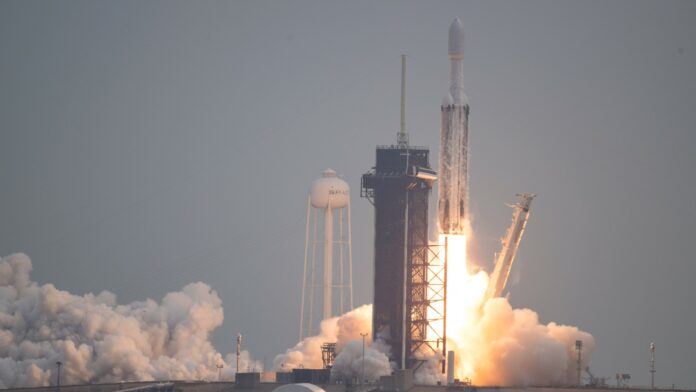NASA's big spacecraft is now officially on its way to a metal-rich asteroid (also called Psyche) after blasting off today on a SpaceX Falcon Heavy rocket. This is the first time a NASA science mission has used SpaceX's largest rocket for a launch.
The Falcon Heavy lifted off from NASA's Kennedy Space Center at 10:19 a.m. ET. The Psyche spacecraft successfully separated from the rocket's upper stage just over an hour after liftoff. , and NASA engineers established communications with it shortly before noon.
Psyche (the spacecraft) will now embark on a six-year, 2.200 billion mile journey to Psyche (the asteroid), which is located in the main asteroid belt between Mars and Jupiter. Before the spacecraft reaches its target, it will conduct a technology demonstration of the Deep Space Optical Communications experiment. If successful, it would be the first time optical communications have been demonstrated beyond the Earth-Moon system.
The van-sized spacecraft will reach Mars in May 2026 and will use that planet's gravitational field to propel itself toward the target asteroid. Once there, Psyche will spend 26 months orbiting metal-rich asteroid to study, for the first time, a space object that has a metal surface. The spacecraft will take multispectral images, map the asteroid's surface and study its chemical and mineral composition. The spacecraft is also equipped with other instruments, such as a radio antenna and a spectrometer, to study the asteroid's gravitational field and high-energy particles.
NASA's Launch Services Program, which essentially acts as a middleman to match spacecraft with the most suitable rockets, selected Falcon Heavy after labeling Psyche a "Category 3" mission. By agency certification requirements, a launch vehicle must have a “significant flight history” to be eligible for these missions. NASA will use Falcon Heavy many more times in the coming years: in 2024, the rocket is reserved to launch a geostationary weather satellite and the Europa Clipper mission to one of Jupiter's moons.
NASA awarded SpaceX a roughly $131 million contract for the launch, although the agency will likely spend more than $1.200 billion on the overall mission.




